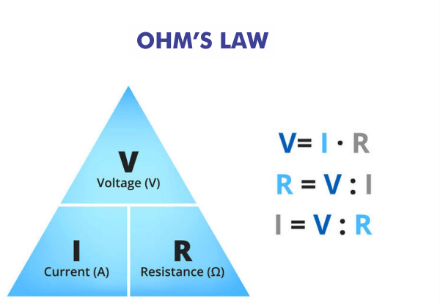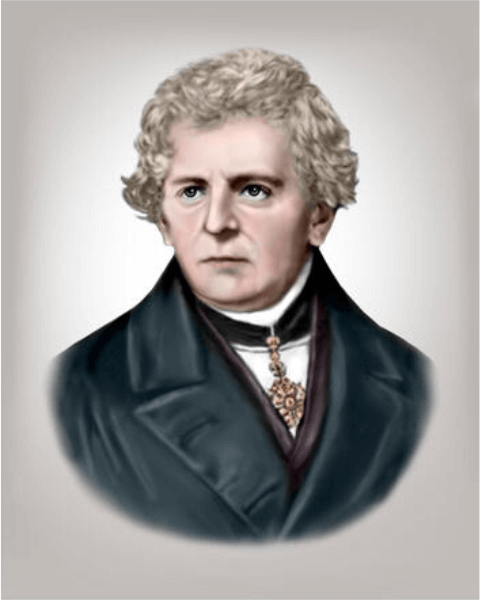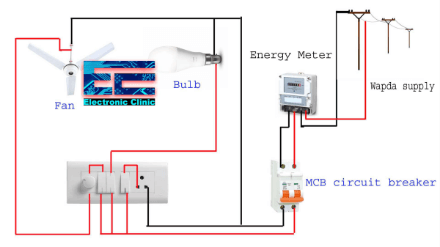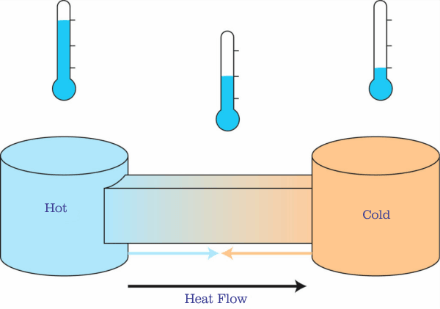Ohm's Law DefinitionIntroductionOhm's Law is a fundamental principle of physics and electrical engineering, according to which the voltage put across a conductor immediately proportionately affects the current flowing through it. The Law was first formulated by the German physicist Georg Ohm in 1827 and is one of the most widely used equations in engineering and science. In Ohm's Law, the current (I) through a conductor is equal to the potential difference (V) across it divided by the resistance (R). Mathematically, the equation can be written as I = V/R. Given the resistance and the applied voltage, this equation allows engineers and scientists to calculate the current through a conductor. 
Ohm's Law is useful in various real-world situations, including circuit design, analysis, power supply design, and amplifier design. It can also determine an AC circuit's impedance and the power lost through a resistor. The equivalent resistance of a network of resistors and the current and voltage of a circuit, including several resistors, can also be calculated using this method. Ohm's Law is another key idea in comprehending how electricity functions. It shows how the current flowing through a circuit is impacted by the circuit's resistance and the voltage applied to the circuit. Additionally, it explains why a rise in resistance causes a fall in current and vice versa. Ohm's Law is a fundamental principle of physics and electrical engineering applied in many research and engineering fields. It is an essential part of fundamental electronics and a helpful tool for studying and constructing electrical systems. Historical BackgroundOhm's Law, named after the German physicist Georg Simon Ohm, is one of the most basic electricity rules. In 1827, he presented the results of his research on the connection between electrical current, voltage, and resistance. 
Before Ohm, it was thought that the voltage across a conductor was directly proportional to the current running through it since the nature of electricity was not fully understood. Luigi Galvani, who found that electrical currents could be produced by attaching a metal wire to a nerve in a frog's leg, initially put forth this theory in the late 18th century. The work of Ohm, however, challenged this widely held notion by demonstrating that the relationship between current, voltage, and resistance was more complex and that the current flowing through a conductor was not proportional to the voltage applied to it but rather was proportional to the voltage divided by the conductor's resistance. It came to be known as Ohm's Law. Since Ohm's work directly contradicted the dominant scientific theories, it was initially viewed with suspicion. It took some time before Ohm's Law was acknowledged and applied extensively in electrical engineering. Ohm's Law significantly influenced the discipline of electrical engineering and acted as a catalyst for the growth of electrical circuits and the electric power sector. The Law enabled engineers to design electrical circuits for various uses, including lighting, heating, and power generation, by calculating the conductors' current, voltage, and resistance. Ohm's Law has also been applied in a wide range of physics and engineering fields, such as the design of electrical equipment, the research of thermodynamics, and the analysis of electronic circuits. Ohm also made significant contributions to the field of physics by investigating electromagnetic induction and creating a mathematical theory of electricity, in addition to his work on Ohm's Law. Ohm's Law is a basic principle of electrical engineering and is currently taught in many physics and electrical engineering courses. It continues to be a key component in designing and advancing electrical systems and technologies. It is employed as a fundamental tool for understanding and analyzing electrical circuits. In conclusion, Ohm's Law is a cornerstone of electrical engineering and has profoundly impacted the field since it was first published by Georg Simon Ohm in 1827. It continues to be widely used today and is considered a fundamental principle of electrical engineering. Explanation of the Relationship Between Voltage, Current, and ResistanceFollowing Ohm's Law, three significant electrical quantities-voltage (V), current (I), and resistance (R) are related to one another. According to this rule, as long as the conductor's temperature is constant, the voltage across it between two points will always be directly proportionate to the current it is carrying. The conductor resistance serves as a proportionality constant. The equation can be written as V=IR. Voltage is the difference in electric potential energy between two locations in a circuit. It measures the electrical pressure that forces electric charges from one location to another. The unit of voltage is the volt (V). The electric charge flowing across a circuit is referred to as current. It is a method for determining how much electric charge moves through a conductor in a given amount of time. The unit of current is the ampere (A). The ability of a substance to withstand the flow of an electric current is referred to as resistance. It measures the resistance to the flow of electricity in a circuit. The unit of resistance is the Ohm (Ω). If the other two are known, any of the three electrical quantities can be calculated using Ohm's Law. For instance, using the equation R=V/I, the resistance may be determined if the voltage across a conductor and the current passing through it are known. Using the formula V=IR, the voltage may be computed if the resistance and current are known. It is important to note that Ohm's Law is only valid for Ohmic materials. These materials exhibit a linear relationship between voltage and current. For materials that do not exhibit this linear relationship, Ohm's Law is not applicable. In conclusion, Ohm's Law is a fundamental electrical law that connects a conductor's voltage, current, and resistance. The analysis and design of electrical circuits depend heavily on this relationship. Applications of Ohm's LawHere are some of the most significant applications of Ohm's Law:
Theoretical physics, electrical circuit design, power generation, electronic circuit design, automobile electronics, household wiring, and medical equipment are just a few of the many engineering and scientific fields where Ohm's Law is used. It is a crucial tool for engineers and scientists in various sectors since it can link voltage, current, and resistance. Limitations of Ohm's LawOhm's Law is a fundamental concept in electrical engineering. It states that the current passing through a conductor between two points is directly proportional to the voltage across the two points and inversely proportional to the resistance between them. However, it has certain limitations that must be taken into consideration when applying it in practice:
In conclusion, Ohm's Law is a helpful resource for understanding and predicting the behavior of electrical circuits, but it should be applied with caution. To fully understand the behavior of a circuit, its limits must be taken into account, and it should be applied in combination with other principles and theories. Importance of Ohm's LawThe importance of Ohm's Law can be seen in its numerous applications, making it a cornerstone in electrical engineering.
Next TopicOsmotic Pressure Definition
|
 For Videos Join Our Youtube Channel: Join Now
For Videos Join Our Youtube Channel: Join Now
Feedback
- Send your Feedback to [email protected]
Help Others, Please Share












